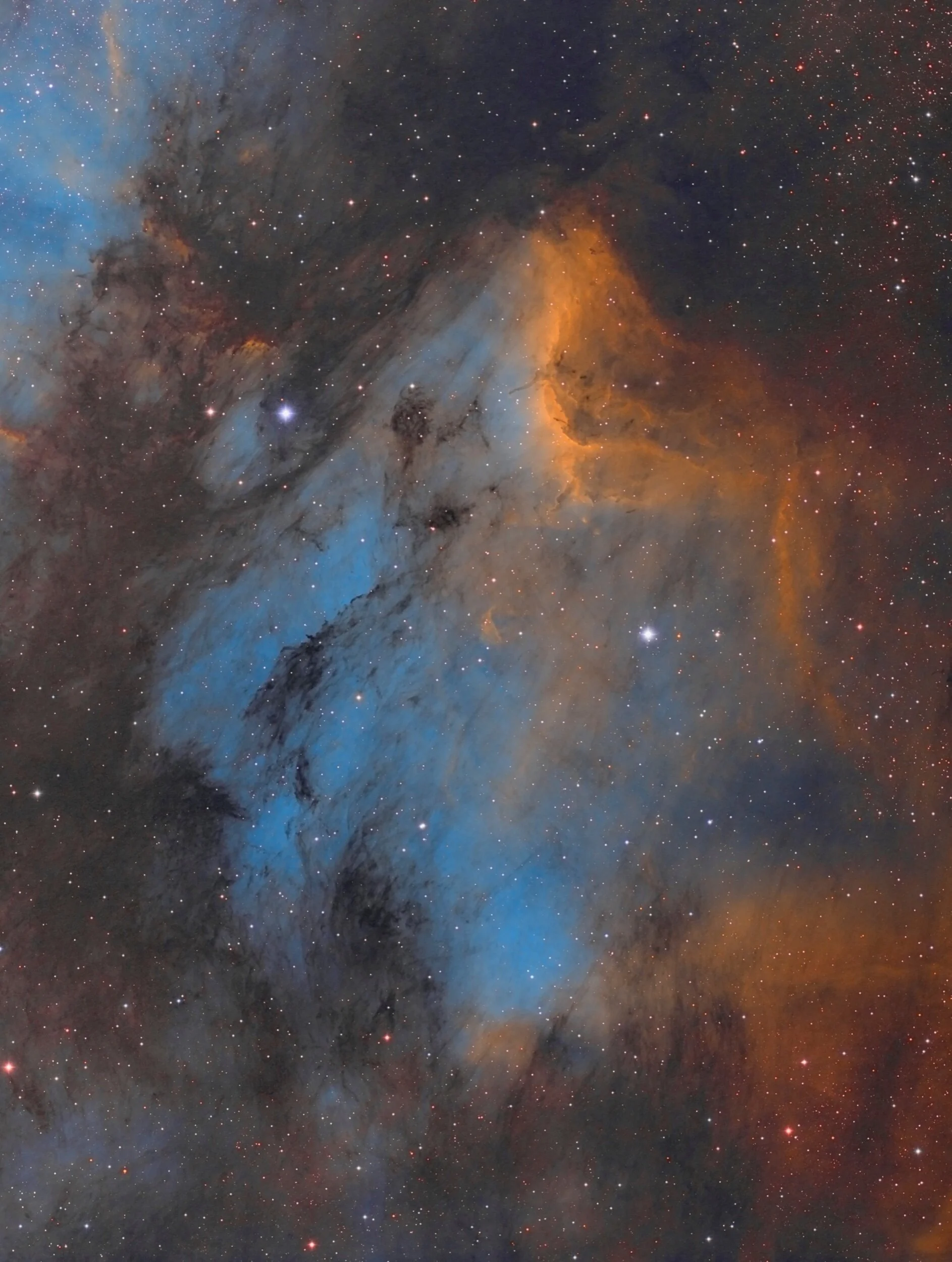
AAPOD2 Image Archives
NGC7000 and IC5070
Image Description and Details : 15 hours on NGC7000/IC5070 from the backyard with a 75mm refractor and QHY600MM! My first attempt at this target a few years ago was terrible so I couldn't wait to shoot it again. Spent 3 nights, one for each narrowband filter, and am happy with the result despite it being "only" 15 hours total.
Copyright: Antoine Grelin www.galactic-hunter.com
Pelican Nebula (IC5070)
Image Description and Details :
Tak FSQ-106ED F/5
SBIG STF-8300M
Astrodon S-ll, H-a, O-lll each 5nm 36mm 600sec x 21, 1bin
Orion CT80 + ZWO ASI 120mm mini
FLI Atlas Focuser
Skywatcher EQ8 mount (with EQ Drive standard4 TCS)
Copyright: Kim Young-Dae
IC 5070/5067 - The Pelican Nebula
Image Information:
Observing Location: backyard, Las Vegas
Sky Conditions: Bortle zone 9
Object's Name or Designation: The Pelican Nebula
Telescope or Lens Used: Meade 115mm APO Astrograph
Camera: ZWO ASI 1600MM
Filters: Ha + Oiii + Sii
Exposure Time(s): 10 minutes per shot. 20 hours and 20 minutes total.
Special Techniques Used: Autoguiding (when it worked, half of the time)
Processed in Pixinsight
Other Comments or Description:
This image shows the bright and busy Pelican Nebula in Cygnus. There are lots of dark clouds visible in the image, as well as streaks of fainter clouds all throughout.
In “front” of the Pelican, near the bottom right can be seen several “Herbig-Haro” objects, which are jets of gasses and other matter being ejected at hundreds of miles per second by the newborn stars. One of the visible ones in the photo (the long thin pillar on the right of the blob) shows HH 555, the most active Herbig-Haro object in the Pelican Nebula.
These objects, when colliding with the surrounded dust of the nebula, create gigantic bright shock waves. These jets will disappears over time as they disperse in space.
Copyright Information: Antoine Grelin - Galactic Hunter




